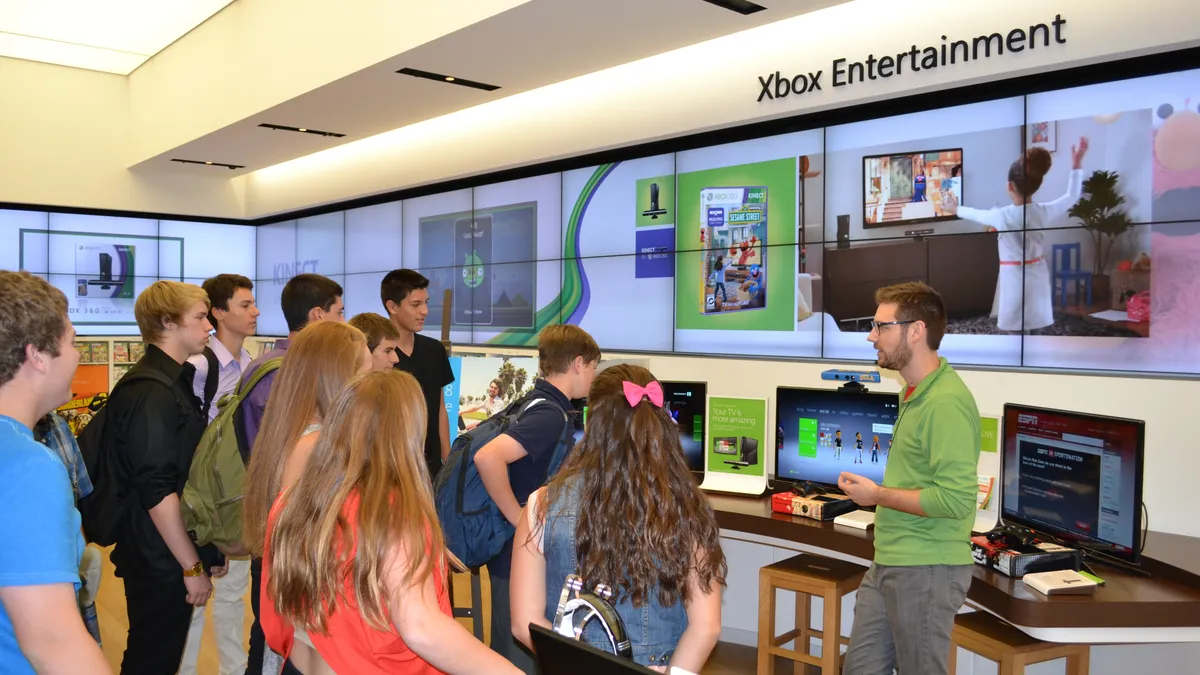Approximately 270 students at Westlake High School in southern California spend a portion of their days taking classes and internships through the Westlake Information Technology Academy, a “school within a school” designed to give students exposure to careers in game design and computer simulation.
The WIT Academy is one of more than 550 California Partnership Academies, developed by school districts in partnership with local colleges and businesses based on the industry demand in the region. The state has identified 15 industry sectors suitable for academies, including agriculture, building and construction trades, business and finance, energy, engineering and architecture, health science, transportation, manufacturing, fashion and hospitality.
To qualify for state grants that support these programs financially, at least 50% of academy students have to be considered at-risk. Criteria include having a poor discipline or attendance record or being half-a-year or more behind when it comes to academic credits that count toward graduation. Some district academies have nearly 100% of students who qualify as at-risk for one reason or another, and another purpose of the academies is to create a positive connection to school for students who might otherwise disengage.
Only about 10% of the Westlake High School student population meets the at-risk criteria identified by the California Department of Education. Sometimes recruiting 45 students per year from this pool is difficult, but Laurie Looker, the WIT Academy’s coordinator, said educating parents and students about the value of the program increases interest.
Since the program opened in the 2001-02 school year, academy students have consistently had better attendance rates, GPAs, and graduation rates than their peers. They are also more likely to go to college and enter the workforce with a good entry-level job.
The career and college readiness focus is important. Students attend the program for three years, from 10th through 12th grade, and in their first year, they spend a lot of time researching possible careers and the education they’ll need to enter them.
“That’s the number-one thing the CPA program does for students,” Looker said. “It gives them a solid blueprint and pathway for the next steps after high school.”
At the WIT Academy, 98% of students end up graduating from high school and about half of them go directly into a four-year college while the other half enrolls in a community college or enters the military.
That graduation rate is higher than the wider school and state average, something that holds true in many partnership academies around California, according to data analyzed by the College and Career Academy Support Network. During the 2009-10 academic year, for example, 95% of CPA students graduated while only 85% of students statewide did.
Looker finds the early career experience to be another critical element of the program. Students spend time with the program’s business partners, learning how the topics they cover in class relate to jobs in the real world. They connect with industry professionals who become mentors and complete internships.
“For most students, this is the make or break,” Looker said. “They say, ‘Yes, I like it,’ or they realize it’s not what they want.”
Being able to make that decision in high school can help many students avoid spending thousands of dollars pursuing a career path in college that they ultimately find out they don’t want to do.
The WIT Academy is one of the few California Partnership Academies to work with Skillify, a career readiness company that helps high school and college students become more self-sufficient in their career searches.
“We bridge the gap so students in these programs don’t have to come back to their advisors when they’re 22 or 23 and ask for help,” said Skillify student success manager Jennifer Tang. “We want them to gain independence.”
Looker also partners with area nonprofits to give students one-time sessions that help them hone specific career readiness and leadership skills.
She says she hears from students and parents that the academy program is the first one that gives them the big picture and highlights a clear pathway for future education and work.
“We give students these resources,” Looker said. “They have to then be disciplined and take what we give them and utilize it.”













